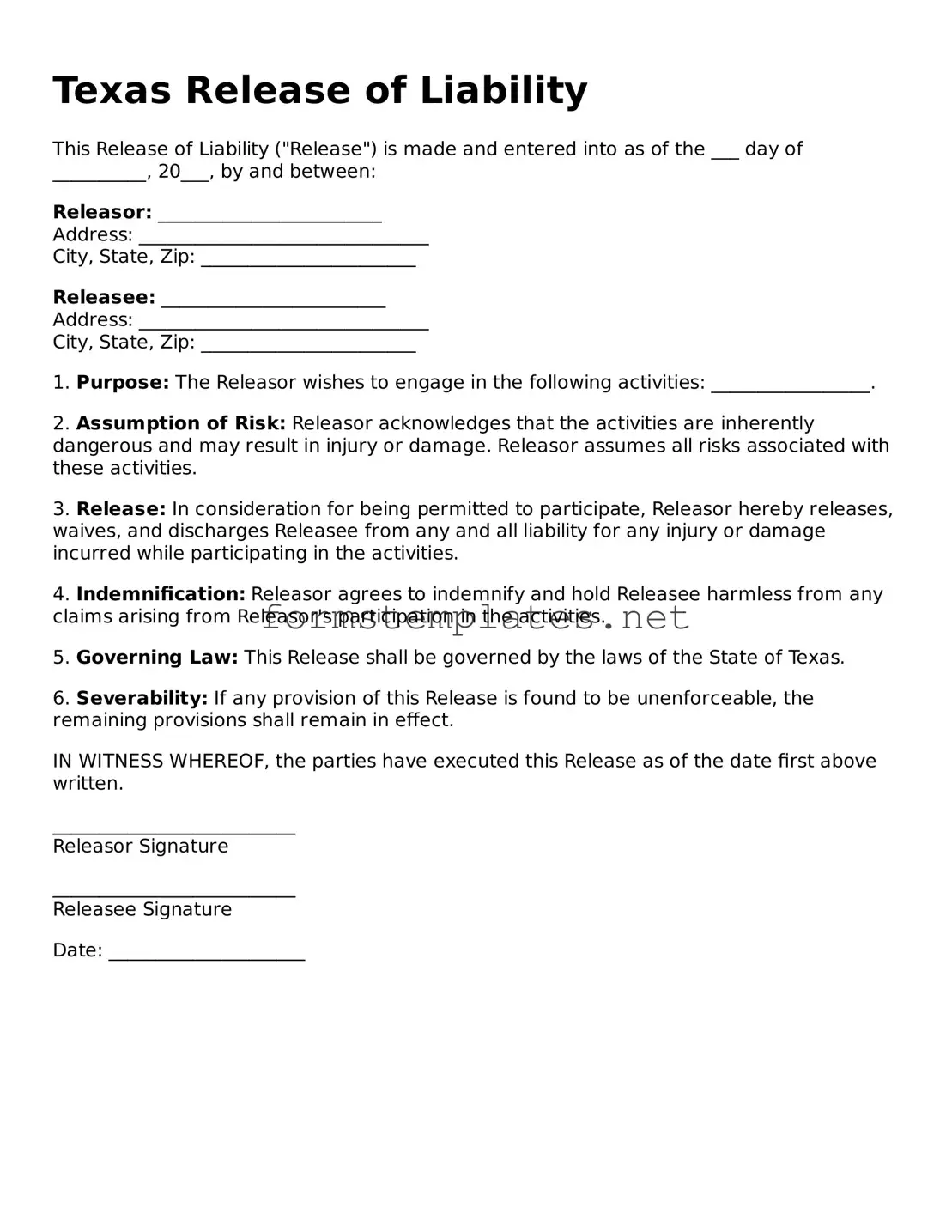Texas Release of Liability
This Release of Liability ("Release") is made and entered into as of the ___ day of __________, 20___, by and between:
Releasor: ________________________
Address: _______________________________
City, State, Zip: _______________________
Releasee: ________________________
Address: _______________________________
City, State, Zip: _______________________
1. Purpose: The Releasor wishes to engage in the following activities: _________________.
2. Assumption of Risk: Releasor acknowledges that the activities are inherently dangerous and may result in injury or damage. Releasor assumes all risks associated with these activities.
3. Release: In consideration for being permitted to participate, Releasor hereby releases, waives, and discharges Releasee from any and all liability for any injury or damage incurred while participating in the activities.
4. Indemnification: Releasor agrees to indemnify and hold Releasee harmless from any claims arising from Releasor's participation in the activities.
5. Governing Law: This Release shall be governed by the laws of the State of Texas.
6. Severability: If any provision of this Release is found to be unenforceable, the remaining provisions shall remain in effect.
IN WITNESS WHEREOF, the parties have executed this Release as of the date first above written.
__________________________
Releasor Signature
__________________________
Releasee Signature
Date: _____________________
